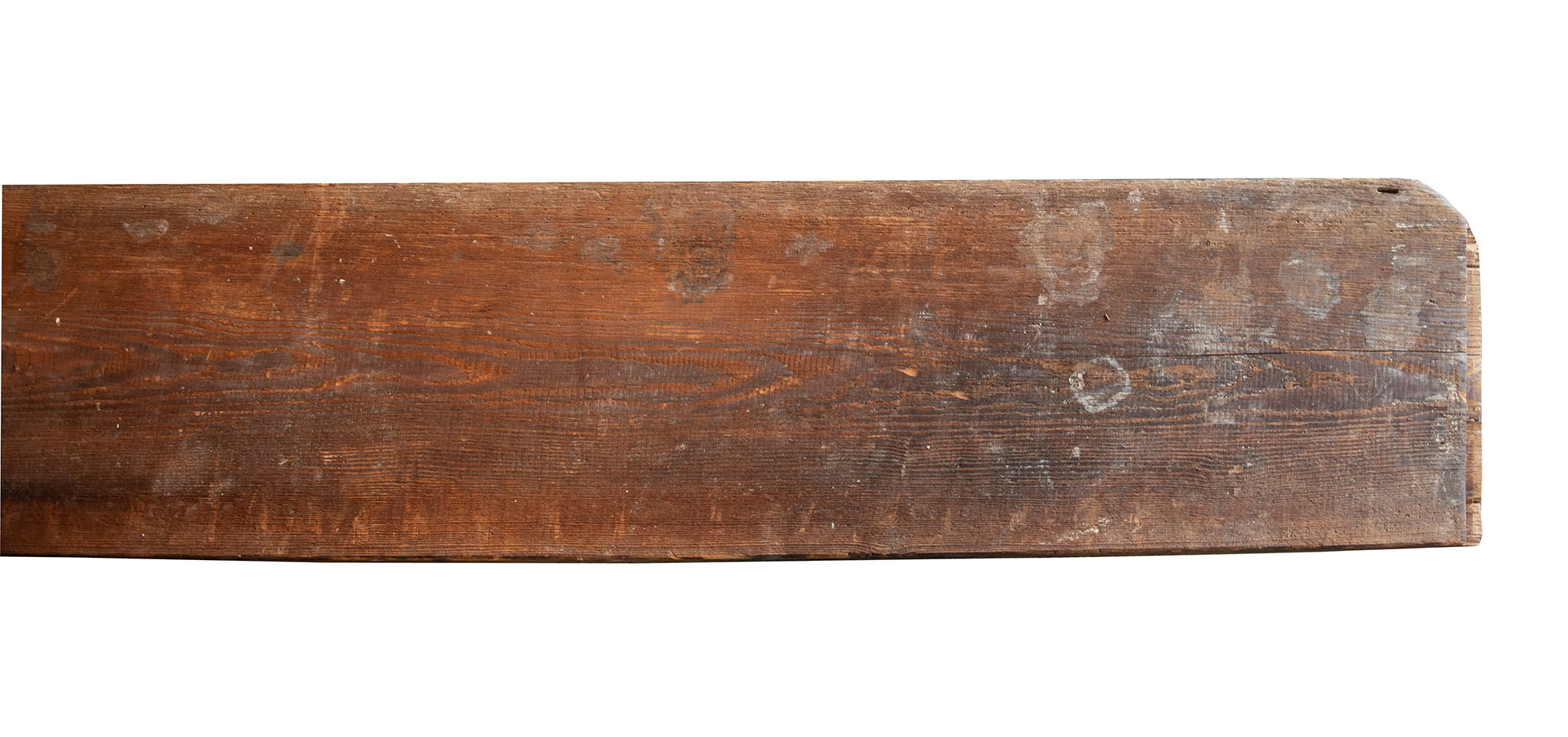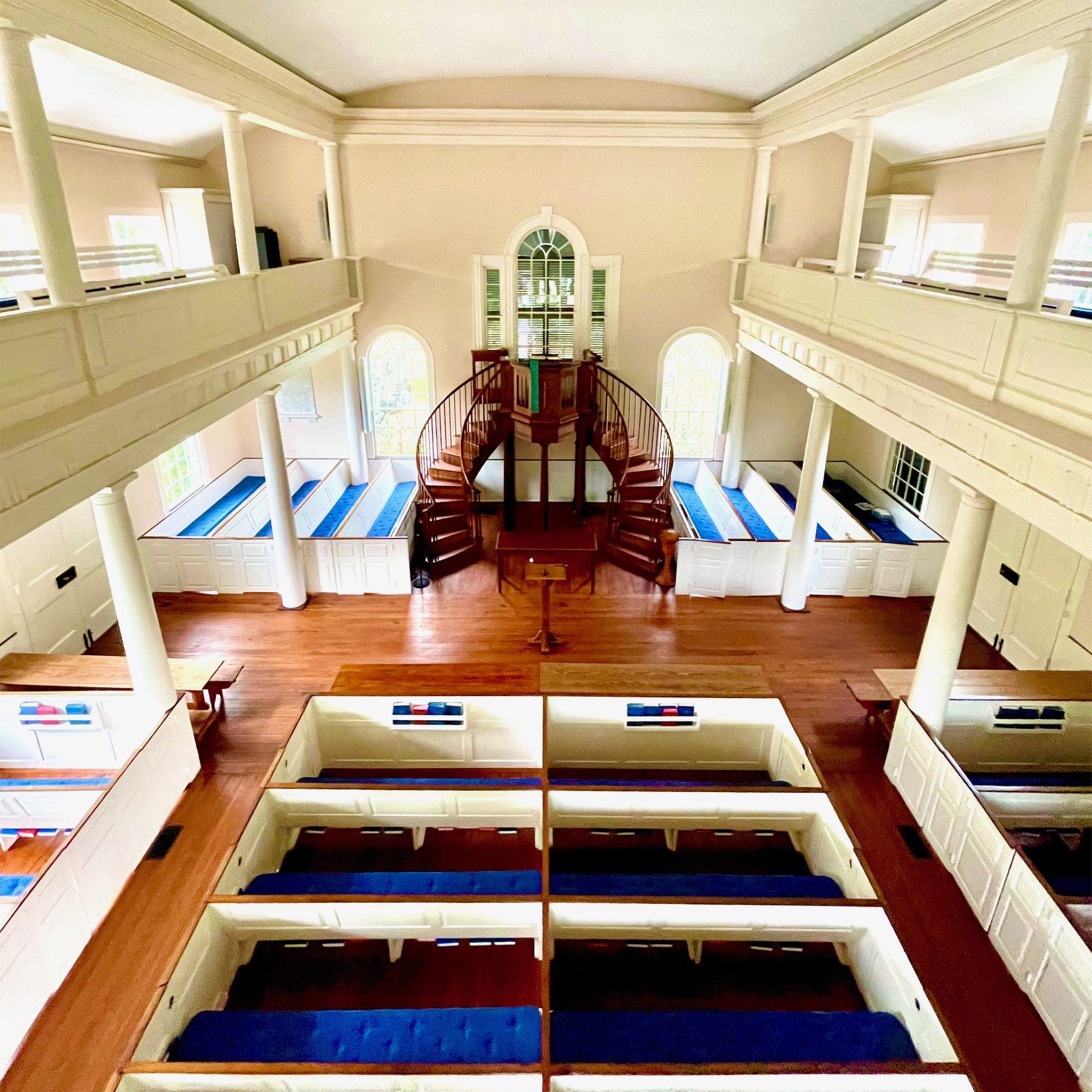The Edisto Pew
Interior view of the Presbyterian Church on Edisto Island, completed c. 1830. Originally, the box pews on the ground floor were reserved for white congregants while the enslaved community was segregated to the rudimentary pews in the galleries.
The Presbyterian Church on Edisto Island can trace its history to the late 17th century. The congregation, dominated by wealthy planters for much of its early history, occupies a handsome Greek revival building completed in 1830. The stately design speaks more to the elite status of its prosperous Lowcountry congregants than to the austerity traditionally associated with the Presbyterian architectural tradition. While the Doric columned portico, Palladian windows, and paneled box pews on the ground floor give an air of stately permanence, some of the most historically impactful furnishings were relegated to the upstairs galleries: simple cypress pews for the enslaved community held in bondage by their fellow parishioners seated below.
From 1830-1861, enslaved people were relegated to the simple cypress pews of the galleries, segregated from, but within sight of their enslavers. Primitive and utilitarian in style, the gallery pews are simply made; a single 20’ long cypress seat and plank
back-rail are supported by rudimentary vertical supports, no more than nine wooden components in total.
The gallery pew is 20’ long and is comprised of only nine cypress members.
The historic congregational dynamic (one congregation composed of both free and enslaved congregants segregated by race within a single building) was upended by the Civil War. After the fall of Port Royal and prompt arrival of U.S. troops on Edisto Island in 1861, the newly freed Black congregants remaining on the island continued to hold worship services in the historic Presbyterian Church building. With the evacuation of the white members and the protection of Union troops, the Black congregants moved to the ground floor, and elected their own Session and minister to conduct services. This arrangement lasted until the end of the war and the return of many white Edisto residents; the Federal government soon returned the property to the control of the White members. Determined not to return to the galleries, the Black congregants established their own new church nearby and called it the Edisto Presbyterian Church. Both congregations remain active today.

The gallery pew’s seat is comprised of a single 20’ long cypress board. The rudimentary gallery pews provide a contrast to the sophisticated box pews of the ground floor.
The historic gallery pew, which survived unaltered, was removed during a 21st century renovation of the church and gifted to The Charleston Museum. It was most recently exhibited in America’s First Museum: 250 Years of Collecting, Preserving and Educating, Part 2 and is scheduled to go on exhibit in the Museum’s upcoming permanent Post-Civil War gallery later in 2024.
Chad Stewart
Curator of History



